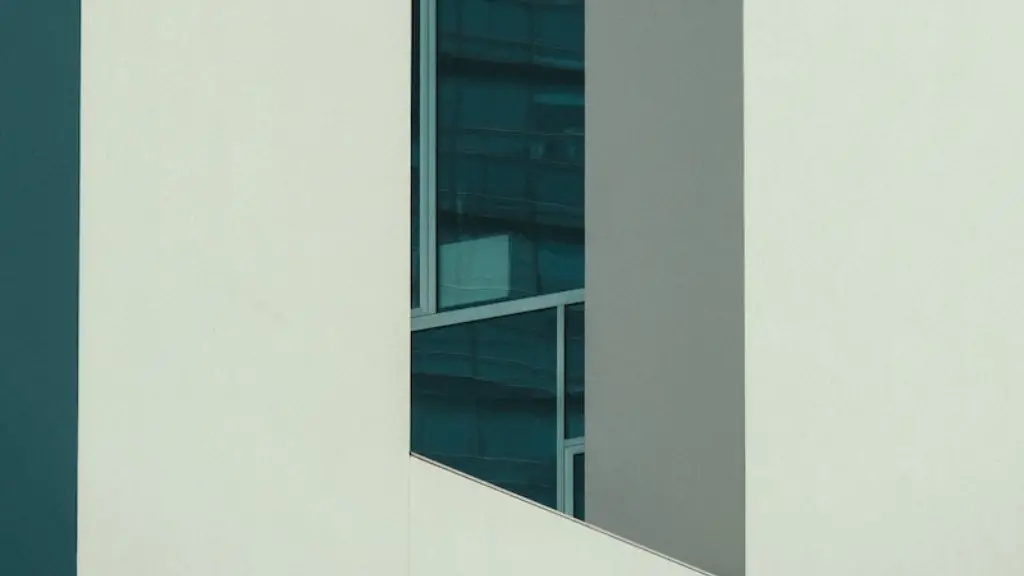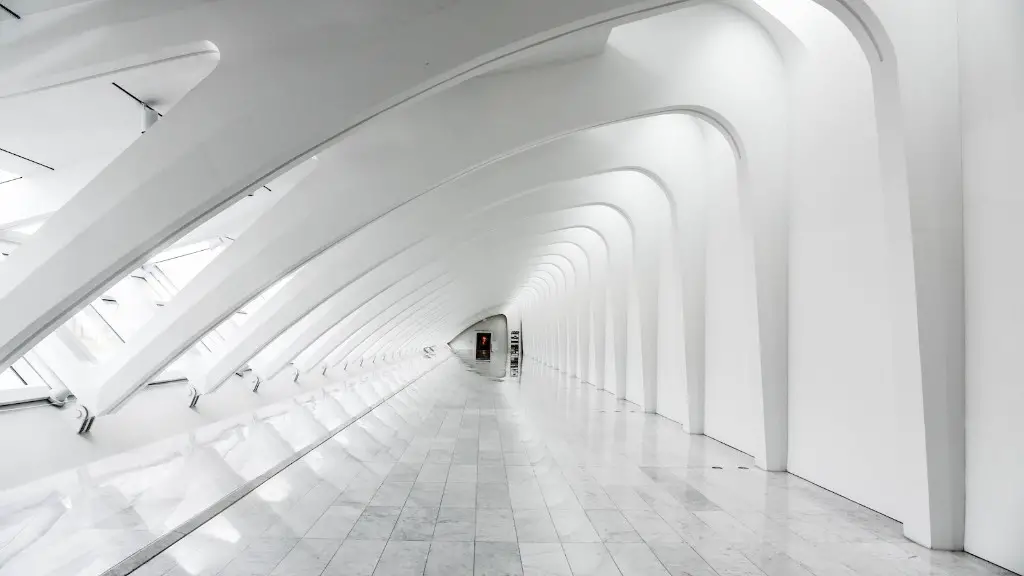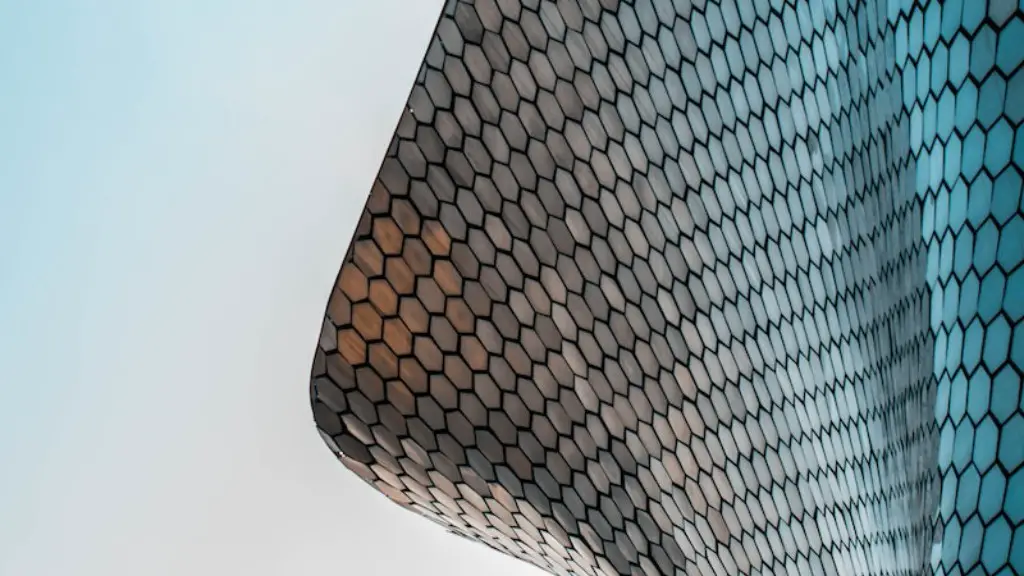Biomimetic architecture is architecture that takes its inspiration from nature. It can take many forms, from buildings that mimic the shapes and forms of natural objects, to those that use natural materials or that are designed to work with nature to create a more sustainable built environment.
Biomimetic architecture is an approach to designing buildings and other structures that are inspired by nature. The goal of biomimetic architecture is to create buildings and other structures that are more sustainable and efficient than those designed using traditional methods.
What is biomimetic concept in architecture?
Biomimetic architecture takes inspiration from nature to create sustainable buildings and structures. By studying and applying construction principles found in natural environments, biomimetic architecture can create more efficient and durable buildings. This approach to design can help reduce the impact of humans on the environment and create a more sustainable future.
The Gherkin is a commercial skyscraper in the heart of London. The architects at Foster and Partners used biomimicry to create the highly energy efficient building which has half the energy consumption of a similarly sized skyscraper. The Gherkin is an excellent example of how biomimicry can be used to create more sustainable buildings.
What is biomimetic design
Biomimicry is an approach to technology that focuses on imitating or using nature as a model. This can be done in order to solve human problems or to simply learn from nature. Janine Benyus is a big proponent of biomimicry, and she sees nature as a source of inspiration and knowledge.
Biomimetic architecture is a field of architecture that seeks to apply nature’s complex ways to human habitats. The term “biomimicry” was first coined in the early 1980s, and it has since assisted in the creation of some of the most adaptive and ecologically-centered forms of architecture.
Biomimetic architecture often takes inspiration from nature’s most efficient designs and systems in order to create more sustainable and resilient human habitats. For example, some biomimetic architects have looked to termites’ nests for ideas on how to create more energy-efficient buildings. Others have studied the way spider silk is produced in order to develop new methods of creating stronger and more flexible building materials.
As we continue to face the challenges of climate change and dwindling resources, biomimetic architecture provides a promising way forward. By mimicking nature’s strategies for survival, we can create more livable and sustainable human habitats that are better able to withstand the challenges of our ever-changing world.
What are some examples of biomimetic?
Biomimicry is the study of nature’s designs and the application of those designs to solve human problems. Here are a few more examples of biomimicry:
1. Down feather insulation: Heavy winter coats are stuffed with down or other feathers so that we can stay warm without flying south for the winter.
2. Termite mound cooling: Humpback whale wind turbines use the same principle as termite mounds to cool themselves.
3. Beetle water collection: Spiders use their webs to collect water droplets, which they then drink.
4. Spider web glass: Scientists are developing a type of glass that is as strong as a spider’s web.
Biomimicry is the act of copying or imitating forms and processes found in nature. There are three main types of biomimicry:
1. Copying form and shape: This involves mimicking the shapes of natural objects, like the wings of a bird or the leaves of a tree.
2. Copying a process: This involves imitating a process found in nature, like photosynthesis in a leaf or the way a beehive is organized.
3. Mimicking at an ecosystem level: This involves imitating an entire ecosystem, like building a nature-inspired city.
What are some of the best examples of biomimicry in architecture?
Biomimicry is an important tool for architects to use when considering the design of their systems. By studying and observing natural systems, architects can learn from the successes and failures of these systems to improve the design of their own systems. Some examples of biomimicry in architectural design include solar panel systems that mimic the way plants convert sunlight into energy, and synthetic materials that mimic the way plants and animals use their natural environment to protect themselves from the elements.
In a nutshell, biomimicry is the “mimicry,” or more accurately, the emulation of life’s engineering principles in our own designs. In contrast, biophilia describes humans’ connection with nature and biophilic design is replicating experiences of nature in design to reinforce that connection.
Who invented biomimetic architecture
Biomimicry is the practice of looking to nature for inspiration in solving human problems. Biomimetic architecture is the application of this principles to the design and construction of buildings.
There are a number of ways in which nature can inspire the design of more sustainable and efficient buildings. For example, studying the way plants take in sunlight can help us design more energy-efficient buildings. Or, looking at the way animals build their nests can give us ideas for creating more comfortable and sustainable homes.
Looking to nature for inspiration is not a new concept. However, with the increasing awareness of the importance of sustainability, biomimicry is becoming more and more popular as a way to design more environmentally-friendly buildings.
Biomimicry can be defined as the emulation of the models, systems, and elements of nature for the purpose of solving complex human problems. The term was coined by German-born American architect, industrial designer, and inventor, Oswald Liendecker, in the 1970s. Biomimicry in architecture is the process of applying lessons learned from nature to the design and construction of buildings and other structures.
The concept of biomimicry in architecture is not new. The Egyptian pyramids, for example, are thought to have been inspired by the natural formations of mountains. In more recent times, the applications of biomimicry in architecture have become increasingly sophisticated, as architects and engineers have looked to nature for solutions to a wide range of challenges, from designing more energy-efficient buildings to developing new materials and construction methods.
One of the most well-known examples of biomimicry in architecture is the concept of the green roof. Green roofs are vegetated roofs that help to regulate building temperatures, reduce stormwater runoff, and provide a host of other environmental benefits. The idea for green roofs was inspired by the way in which trees and other vegetation naturally cool the earth by evaporating water from their leaves.
Today
Is biomimetic architecture sustainable?
Biomimetic design is an important tool for sustainable architecture. By borrowing design principles from nature, we can create more efficient buildings that use less energy and resources. This helps to reduce our impact on the environment and preserve our natural resources for future generations.
The study of biomaterials and bioprocesses is an important area of research for many industries. biomaterials are materials that are produced by or derived from living organisms. These materials can be used in a variety of applications, including medical devices, implants, and regenerative medicine. Bioprocesses are the processes used to create or modify biomaterials. These processes can be used to create new biomaterials or to improve existing ones.
What are the 3 essential elements in biomimicry
Emulate: To mirror or copy the strategies found in nature.
Ethos: The fundamental character or spirit of a culture; the underlying attitude that informs our actions.
(Re)Connect: To establish or reestablish a relationship; to bridge the gap between ourselves and the natural world.
Biomimetics is a relatively new field of study that is constantly evolving. The basic premise is to learn from and imitate nature in order to solve problems or develop new technologies. This can be done in a number of ways, such as studying how animals or plants adapt to their environment and then applying that knowledge to engineering.
There are many potential applications for biomimetics. For example, studying how fish swim can lead to the development of more efficient swimwear or swimming techniques. Or, studying how birds fly could lead to the development of improved aircraft.
The possibilities are endless, and the field of biomimetics is still in its early stages. However, it has already shown great promise in a number of different areas.
What is the difference between biomimicry and biomimetics?
Biomimetic innovation is all about looking to Nature for inspiration in order to create more sustainable products and designs. It can be challenging to come up with radical, new ideas that are inspired by Nature, but the results can be revolutionary. Biomimicry is all about focusing on inspiration, ideation, and education, with the explicit goal of sustainability and reconnecting people with Nature.
Biomimicry can be defined as the imitation of the models, systems, and elements of nature for the purpose of solving complex human problems. The application of biomimicry can benefit the built environment through site design, construction, and operations, as well as reduce the negative impact on the natural environment of numerous techniques for reducing carbon emissions, waste, and others.
One example of how biomimicry is being used to benefit the built environment is in the design of energy-efficient buildings. by mimicking the ways that animals and plants regulate their body temperature, it is possible to create buildings that use less energy to maintain comfortable temperatures for occupants.
Another way that biomimicry is being used to benefit the built environment is through the development of self-cleaning and self-repairing materials. These materials are inspired by the way that some plants and animals are able to clean and repair themselves.
The benefits of biomimicry are not just limited to the built environment. Biomimicry can also be used to help solve many of the negative impacts that humans have on the natural environment. For example, by mimicking the way that plants photosynthesize, it is possible to develop more efficient and less
What are the advantages of biomimetics
Biomimicry can help us to create more sustainable design solutions and environmentally friendly products by studying the ways in which nature has solved certain problems. For example, by studying how plants collect and store water, we can learn how to create similar solutions in our own products. This can help to reduce the amount of water that is required for manufacturing, and to reduce the amount of waste water that is produced.
Some disadvantages of biomimicry include working in a team which can be difficult, needing detailed cross-disciplinary thinking, and potentially making something look environmentally friendly when it may not be.
Final Words
Biomimetic architecture is an approach to design that seeks to replicate or imitate the forms, processes, and systems found in nature. The goal is to create structures and systems that are more efficient, sustainable, and resilient than those designed using traditional engineering methods.
Biomimetic architecture is a field of architecture that studies and draws inspiration from nature. By understanding how natural systems work, biomimetic architects can design buildings and other structures that are more efficient, sustainable, and resilient. Through the use of biomimicry, architects can create buildings that are better suited to their environment and that have a smaller ecological footprint.





